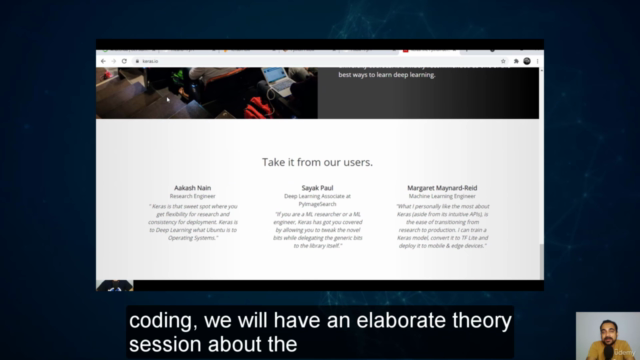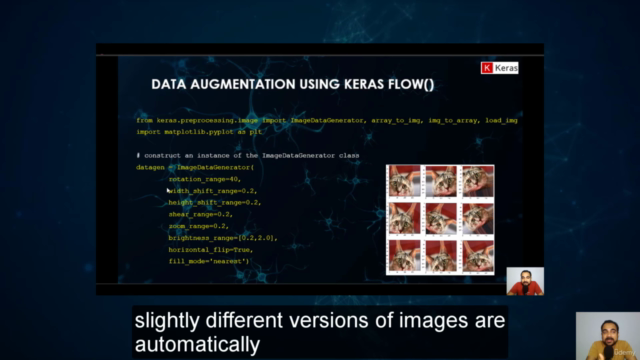Deep Learning using Python - Complete Compact Beginner Guide

Why take this course?
It seems like you've outlined a comprehensive plan for creating and training a Convolutional Neural Network (CNN) model for flower classification using a dataset, incorporating various techniques and tools such as hyperparameter tuning, transfer learning, and cloud-based GPU acceleration. Here's a step-by-step guide to follow your plan:
-
Fetch and Load Dataset:
- Download the flower dataset from Kaggle.
- Unzip the dataset and inspect it to understand the structure and content.
- Split the dataset into training and testing sets, ensuring that each class has a representative number of images in both sets.
-
Prepare the CNN Model:
- Define a CNN architecture using Keras. You can start with one of the pre-trained models like VGG16/VGG19 or ResNet50.
- Customize the model if necessary to suit your dataset.
- Compile the model with an appropriate optimizer, loss function, and metrics.
-
Model Training:
- Fit the model to the training data.
- Monitor the training process using callbacks and log the history of accuracy and loss.
- Visualize the training history using tools like Matplotlib to see how well the model is learning over time.
-
Hyperparameter Tuning:
- Use Keras Tuner or similar hyperparameter optimization libraries to explore different configurations for the model.
- Compare results and select the best-performing model based on validation metrics.
-
Transfer Learning:
- Download pre-trained models from Keras (TensorFlow).
- Make predictions using these models to see how well they perform out of the box on your dataset.
- Train the pre-trained models further on your flower dataset, adjusting hyperparameters as necessary.
-
Use GPU for Training:
- Utilize Google Colab or another cloud-based platform with a free GPU to accelerate training.
- Upload and prepare your dataset in the cloud environment.
- Train your model(s) using the available GPU, which will significantly reduce training time.
-
Model Serialization and Evaluation:
- After training, save your final model's weights and architecture.
- Use the trained model to make predictions on new data.
- Evaluate the model's performance by comparing its predictions with the true labels.
-
Final Steps:
- Share the code, images, models, and weights used in the course.
- Receive a certificate upon completion of the course for your learning record.
-
Continued Learning and Projects:
- Continue to experiment with different models and techniques.
- Apply the skills learned in this course to other image recognition tasks.
- Consider publishing your findings or contributing to open-source projects related to image recognition.
Remember, the key to mastering deep learning is practice and experimentation. Each time you train a model, you learn something new that can lead to improvements in performance. Good luck with your CNN project, and I hope this guide helps you along your learning journey!
Course Gallery




Loading charts...